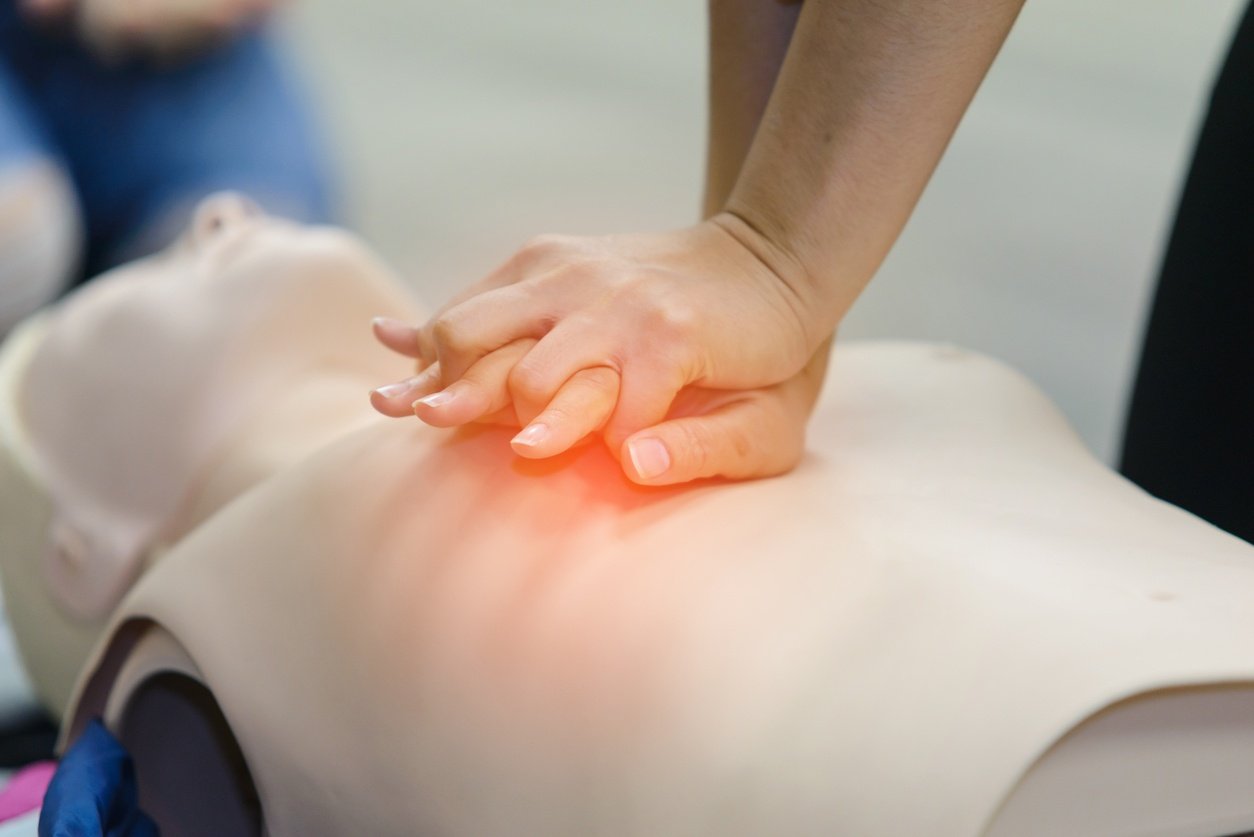
It is CPR and AED Awareness Week (June 1-7), a time to highlight the importance of cardiopulmonary resuscitation (CPR) training and how to use an automated external defibrillator (AED) device. Learning how to perform CPR and use an AED can be the difference between life and death.
One out of 20 people will suffer a cardiac arrest in their lifetime; fewer than 25 percent of people are prepared to jump into action to help that person survive the event. According to one study, when bystander CPR was administered to cardiac arrest victims, 22.9% survived until admitted to the hospital, and 11.9% were discharged alive. Compare that to rates of victims who received no bystander aid: 14.6% and 4.7%, respectively,
SimTalk Blog Content Round-Up
For EMS Week in May, we published an article about layperson training, known as First On The Scene (FOTS) training.
First on the Scene Training (FOTS) is a course for EMS Certified educators to train bystanders on how to respond when an emergency happens. FOTS does not replace the need for EMS personnel or other first responders; rather, it instructs lay people on the appropriate steps to take to help someone until first responders can reach the scene.
In addition to knowing CPR and how to use an AED, people who take FOTS classes will learn how to:
- Activate the 911 system
- Administer naloxone (brand name Narcan®)
- Administer epinephrine
- Respond to life-threatening bleeding
- Treat penetrating chest trauma
- Move an injured person safely
- Position an injured person
Read more about FOTS and learn how to become a certified trainer.
Hands-Only CPR
More than 350,000 cardiac arrests occur outside of a hospital each year.
- 18.8 percent occur in public settings
- 69.5 percent occur at home
- 11.7 percent occur in long-term care facilities
The sooner after someone collapses that CPR is initiated, the better the outcome is for the victim. However, many bystanders, even professionals, are sometimes hesitant to start CPR on a stranger. Even people with certifications in CPR are reluctant to do more than dial 9-1-1 and wait for EMS.
A few possible reasons for reluctance:
- Afraid of being legally liable in case of injury
- Not sure how to perform CPR
- Afraid to put skills learned in class to test in a real-life situation
- Do not want to touch a stranger
As Neal Murff tells students, “If you’re in a situation where CPR is necessary, the worst thing that can possibly happen has already happened.”
Read more about and see our infographic on how to perform hands-only CPR.
AHA Guidelines
As of January 31, 2019, all CPR manikins used in American Heart Association (AHA) adult CPR courses must feature an instrumented directive feedback device (IDFD). Devices such as these provide real-time, audio-visual feedback as the CPR is being performed, allowing student performance to be evaluated in an immediate and ongoing manner.
Read more about AHA Guidelines for certification.
You can find a variety of adult manikins that meet the new AHA CPR feedback device requirement at www.pocketnurse.com. The following manikins and devices are in compliance:
- Brayden CPR Manikin with LED lights for visual reminders and feedback
- QCPR Little Anne with feedback technology to improve CPR training efficiency
- Simulaids HeartiSense CPR Kit to turn any manikin into a smart manikin
You will find all these and more in the 2020-21 CPR Product Guide.







